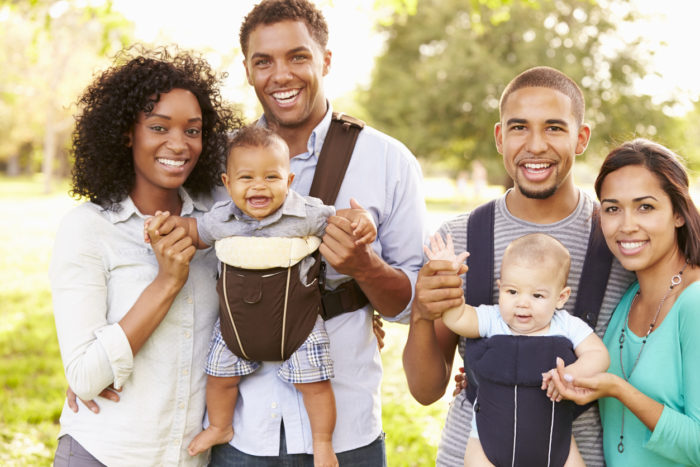Babywearing Is Back – Make It Safe
CPSC Issues Federally Mandated Safety Standard on Slings, Pouches
Babywearing – the act of using a sling or a pouch to hold an infant to one’s body – has existed for thousands of years in several different cultures. In the United States, it became a top trend in 2010 when Hollywood celebrities were seen sporting BabyBjorns, CuddleBugs, Ergobabys and Tulas. And then there was the movie Away We Go about an expecting couple traveling the country to find the perfect place to raise their child, which featured a much-discussed stroller scene. When the couple visits the home of a friend and new mother, they bring her a stroller as a gift, and she becomes outraged.
“I love my babies,” she explains in the scene. “Why would I want to push them away from me?”
It struck a chord with many a parent and started to bring back babywearing. But with its rise in popularity came questions about its safety.
“CPSC is taking this opportunity to urge everyone to use slings and wraps safely, as CPSC has identified 14 infant suffocation deaths with sling-style carriers over the past 20 years,” the Consumer Product Safety Commission stated in a Nov. 19, 2010, release titled “CPSC Educates New Parents on Safe Babywearing; Infant suffocation deaths in slings prompt renewed effort to warn moms and dads.” “
After reviewing numerous cases, child safety experts at CPSC have determined that parents with infants younger than four months of age, premature, low-birthweight babies, and babies with colds and respiratory problems should take extra care in using a sling, including consulting their pediatrician. Suffocation / asphyxiation can occur when babies are contained entirely within the pouch of a sling with their face, including nose and mouth, pressed against the adult’s body, blocking their breathing. Suffocation can occur within minutes. Because of the nature of the product and its use, some slings tend to keep an infant in a curled, chin-to-chest position, which can interfere with breathing. When an infant is in the chin-to-chest position, suffocation can occur. Both scenarios are serious concerns to CPSC. Many of the babies who died in slings were twins in separate slings and infants with breathing issues.”
Fast forward to Jan. 13, 2017, when the CPSC rolled out a federally mandated safety standard to prevent deaths to babies.
“The mandatory standard contains several requirements for sling carriers including: loading to ensure that the sling can carry up to three times the manufacturer’s maximum recommended weight, structural integrity to ensure that after all testing, there are no seam separations, fabric tears, breakage, etc., and occupant retention to prevent the child being carried from falling out of the sling during normal use,” reads a released titled “CPSC Approves New Federal Safety Standard for Infant Sling Carriers.” “In addition, the standard requires sling carriers to come with warning labels and instructional literature. These requirements include: pictures to show the proper position of a child in the sling, a warning statement about the suffocation hazard posed by slings and prevention measures, warning statements about children falling out of slings, and a reminder for caregivers to check the buckles, snaps, rings and other hardware to make sure no parts are broken.”
Between 2003 and 2016, the latest period for which statistics are available, a total of 159 accidents were reported to the CPSC involving babywearing, of which 17 were deadly.
Here are some safety tips on babywearing:
- Check to see whether baby’s face is exposed and visible when in the sling or pouch.
- If mom is nursing baby while in the sling or pouch, remember to reposition baby after feeding, returning baby’s face to an exposed and visible state.
- Repeatedly look at baby while wearing the sling or pouch to ensure all is well.
- Prior to using the sling or pouch, read the directions and find out whether baby meets the weight restrictions.
- Take care when bending over to reach for something. Do not bend from the waist; instead, bend from the knees. That will keep baby snuggled in place.
- Watch out for wear and tear. If seams are ripped or if fasteners are damaged, repair them or purchase a new sling or pouch.
“Babywearing keeps babies in the safest place possible: a parent’s arms, with the baby’s face visible to the carrying adult,” according to a safety brochure from the Baby Carrier Industry Alliance. “Babies are vulnerable in their first four months of life. They require constant supervision, which is why babywearing is critical to the well-being of infants. In a carrier, your baby should be in the same position he would be in your arms: head at your collarbone, and bottom above your waist.”
Share This



